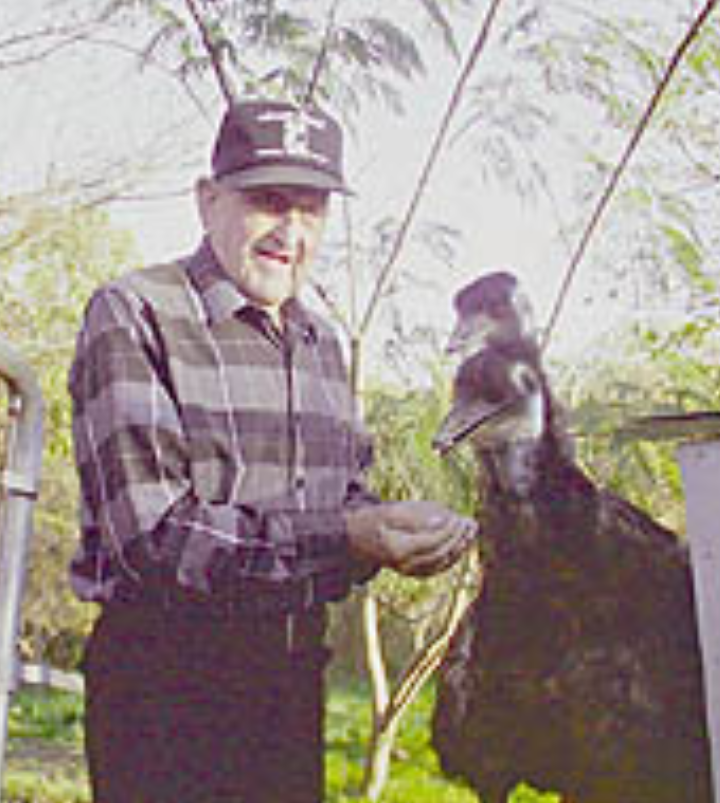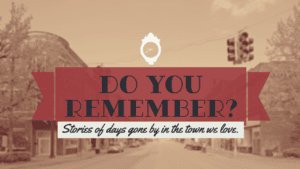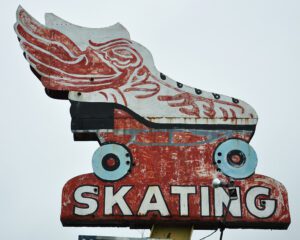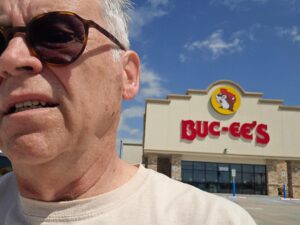Tommy Hager was born in Beggs, Oklahoma on December 3, 1909, to Isaac Newton Hager and Minnie Gail Hager. He was the fifth of seven children and the only boy. Tragically, his father died when he was 10 years old. He married the love of his life, Vivian Alberta Shirley, in 1931. They had three daughters, Vivian Louise Smith, Alberta Jo Wilson, and D. Patricia Asher.
Tommy loved the outdoors and all the birds and animals found there. Many a summer, he and his friends would camp out on a creek and live off the land, hunting, fishing, and trapping. He learned the habits of the animals and how to silently walk through the woods. He taught these skills to his grandsons.
When he was between 8 to 10 years of age, someone gave him a couple of pigeons. Thus began his ornithological obsession and a world-renowned avian collection. His collection had a “simple beginning,” however, it grew to include chickens, then doves, then pheasants, and peacocks. His chickens and pigeons won numerous awards at bird shows. He also became a judge at these bird shows and traveled throughout Oklahoma and the surrounding states, judging them and county and state fairs.
Sometime around 1947, he bought the land east of Sapulpa where he and his wife, Vivian built their house. One of daughter Louise’s memories of that time is when her dad was adding the front porch to the house. A family of bluebirds built their nest there. Louise and her sisters were fascinated by watching the eggs hatch and grow into baby birds. “Daddy wouldn’t finish the porch for fear of disturbing the new family until the babies had left the nest.” Soon after the house was completed, he built barns and pens for his collection of pigeons and chickens, and other farm animals. Before long, the acreage in front of the home was covered with pens, as he began to collect birds from around the world.

Tommy’s dream was to create a zoo where people, especially children, could, at no charge, visit and learn about the birds and animals he had collected. This aspiration was the result of Tommy witnessing a child unable to attend the zoo because the parents didn’t have enough money. His collection grew from common pheasants to rare and endangered species of birds. The zoo was always free to everyone. He raised money only to help feed his collection. He placed an old mailbox in the circle drive for donations, and hatched and sold eggs and baby birds to others interested in the hobby. He was noted for his healthy birds and shared many tips with others, including with zoos around the country. The Tulsa Zoo bought many exotic pheasants and peacocks from him. He was also interested in ducks and geese. He had a special permit to own many of these birds which were endangered and rare.
He was a marvelous storyteller and regularly embellished his tales with fiction. He thought that was acceptable because it made the story more interesting. He often gave the kids visiting him funny nicknames. Louise surmises that it was because there were so many children that he couldn’t remember all of their actual names. Many schools from around Oklahoma and Arkansas had field trips to see his collection and learn about the birds.
Tommy’s wife Vivian was a talented artist, and he always took everyone into the house to show off his wife’s painting. She not only painted on canvas but also on the various eggs. The smallest were quail eggs and the largest were ostrich or emu eggs.
In his late 90’s, Hager began to have trouble caring for the birds and animals and began selling and giving them to friends he had made over the years. He passed away in 2005 at the age of 96 and is buried in the Hager family plot in Beggs, Oklahoma.
Many people who grew up in Sapulpa enjoyed Hager’s Fancy Fowl Farm and have fond memories of the local attraction.
Bill Masters remembered that was where his Sacred Heart School 8th-grade picnic was held. Every year 8th graders from Sacred Heart grade school had a picnic somewhere.
My friend Daryl Howard and I remember going on field trips there while students at Jefferson Elementary. I was always fascinated with peacocks.
Pat Asher who grew up nearby, remembers the exquisitely detailed eggs that Vivian Hager painted. “She would take those big ostrich eggs and she would cut them to where they had little doors on them, like Faberge eggs. She made beautiful artwork, she was a very talented artist.”
She said that Tommy was “just ornery.”
Asher said that there was a rodent problem at the zoo and because of all the animals on the property, poison could not be used. She recalls that Tommy buried a bucket and attached segments of a ruler around the edge of the bucket and placed peanut butter on the pieces of the ruler. He then filled up the basket. The mice would crawl on the ruler to eat the peanut butter and fall into the water and drown.
Louise Hager Smith said about her parents: “Thomas Tobias Daniel Hager lived life on his own terms. He had a dream and he and his mother followed it.










